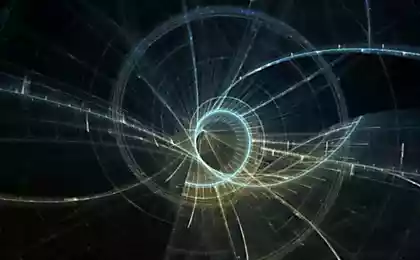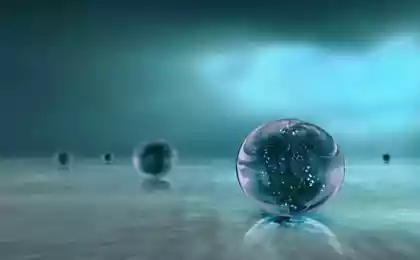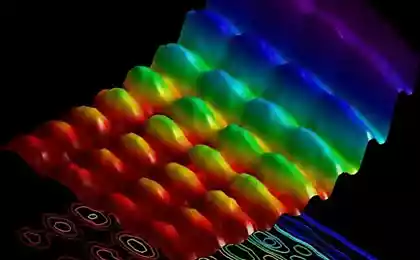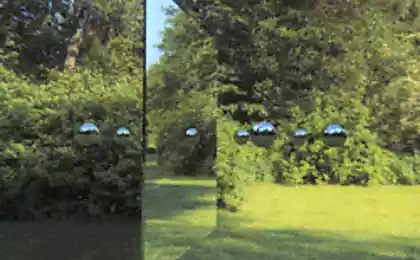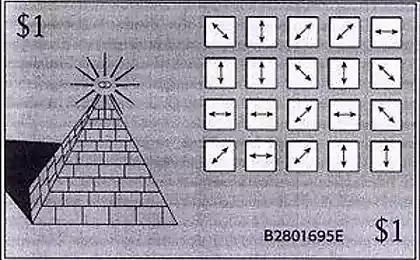601
5 famous quantum experiments
Nobody in the world understands quantum mechanics is the main thing you need to know about it.
Yes, many physicists have learned to use its laws and even predict phenomena based on quantum calculations. But it is still unclear why the presence of the observer determines the fate of systems and forces her to make a choice in favor of one state.
We selected examples of experiments for which the outcome is inevitably affected by the observer, and tried to understand what quantum mechanics is going to do with the interference of consciousness in the material reality.
Schrodinger's Cat
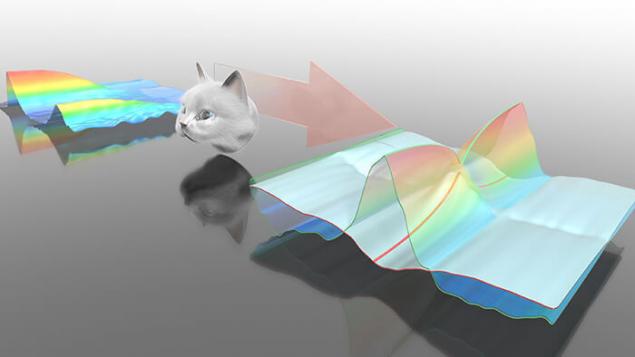
Today there are many interpretations of quantum mechanics, the most popular of which remains Copenhagen. Its main ideas in the 1920-ies was formulated by Niels Bohr and Werner Heisenberg. A Central term of the Copenhagen interpretation became the wave function — a mathematical function containing information about all possible States of a quantum system, in which it also resides.
According to the Copenhagen interpretation, it is to determine the state of the system, to distinguish it from the rest can only observation (wave function only helps to mathematically calculate the probability to nd the system in a particular state). We can say that after observation, the quantum system becomes classical: instantly ceases to coexist in many States in favor of one of them.
This approach has always been opponents (recall the "God does not play dice", albert Einstein), but the accuracy of calculations and predictions prevailed. However, in recent years supporters of the Copenhagen interpretation is becoming less and not the last reason for that is the mysterious instant collapse of the wave function during the measurement. The famous thought experiment of Erwin schrödinger with the poor cat was meant to show the absurdity of this phenomenon.
So remind the content of the experiment. In a black box placed a living cat, a vial of poison and a mechanism that can at a random moment to let the poison in action. For example, one radioactive atom, the decay of which will break the vial. The exact time of decay of an atom is unknown. Known only to half-life: the time during which the decay happens with a probability of 50%.
It turns out that to the outside observer, the cat inside the box exists in two States: either alive, if all goes well, or dead, if the decay occurred and the vial crashed. Both of these conditions describes the wave function of the cat, which changes over time: the farther away, the more likely that radioactive decay has already happened. But as soon as the box is opened the wave function collapses and we see the outcome zhivoderskie experiment.
Thus, as long as the observer does not open the box, the cat will be so forever balancing on the border between life and death, and will determine his fate only the action of the observer. That's absurd, pointed to schrödinger.
The diffraction of electrons
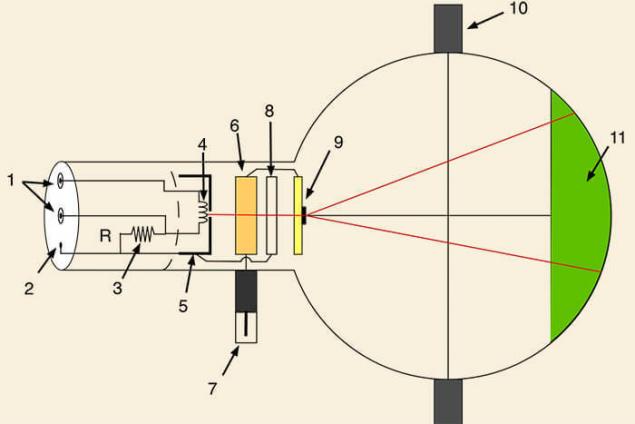
In the largest survey of physicists conducted by The New York Times, experience with diffraction of electrons, delivered in 1961, Klaus Jinsona, has become one of the most beautiful in the history of science.What is its essence?
There is a source that emits a stream of electrons toward the screen-plates. And there is an obstacle in the way of these electrons, a copper plate with two slits. What is the picture on the screen can be expected if the electrons are just small charged balls? Two strips illuminated opposite to the slits.
In fact, on the screen appears much more complex pattern of alternating black and white bands. The fact that during the passage through the slits, the electrons begin to behave not as particles but as waves (similar to as photons, particles of light, can be simultaneously and waves). Then these waves interact in space, somewhere relaxing, somewhere mutually reinforcing, and the result appears on the screen is a complex pattern of alternating light and dark bands.
The result of the experiment does not change, and if you let the electrons through the gap is not a continuous stream, and one by one, even one particle can be both wave. Even a single electron can pass simultaneously through two slits (and it is still one of the most important provisions of the Copenhagen interpretation of quantum mechanics objects can simultaneously show your "usual" material properties, and exotic wave).
But what is the observer? Despite the fact that with him the already complicated story became more complicated. When in similar experiments physicists have tried to fix with the help of instruments which slit the electron actually goes, the picture changed dramatically and became a "classic": two of the illuminated area in front of the slits and no alternating bands.
If electrons did not want to show their wave nature under the watchful eye of the observer. Adjusted to his instinctive desire to see a simple and clear picture. Mystic? There are far more simple explanation: no observation of the system cannot be carried out without physical impact on her. But come back to this a little later.
The heated fullerene
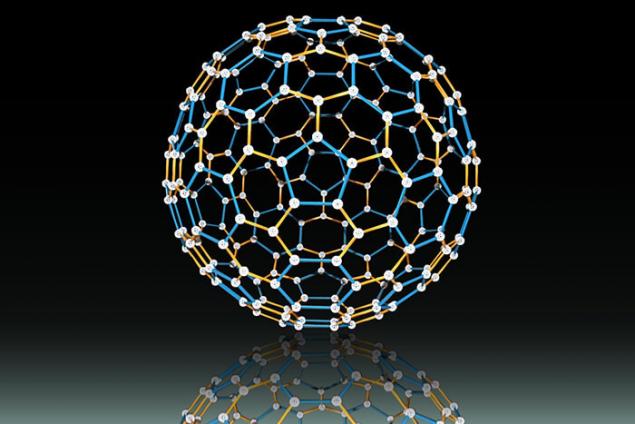
Experiments on the diffraction of particles was not only on electrons but also on much larger objects. For example, fullerenes — large, confined molecules, composed of dozens of carbon atoms (fullerene of sixty carbon atoms form very similar to a soccer ball: a hollow sphere made of five - and hexagons).
Recently, a group from the University of Vienna led by Professor Zeilinger tried to introduce an element of observation in these experiments. To do this, they irradiated moving molecules of fullerene by the laser beam. After a heated external impact, the molecules began to glow and the impression was found for observer its place in space.
With this new feature changed the behavior of molecules. Before the start of the surveillance fullerenes quite successfully around obstacles (exhibited wave properties), like the electrons of the previous example, passing through an opaque screen. But later, with the advent of the observer, fullerenes calmed down and began to behave as a completely law-abiding particles of matter.
Cooling measurement

One of the most famous laws of the quantum world is the Heisenberg's uncertainty principle: we cannot simultaneously set the position and velocity of a quantum object. The more precisely you measure the momentum of a particle, the less precisely you can measure its position. But the action of the quantum laws operating on the level of tiny particles, usually unnoticed in our world of large macro-objects.
Because the more recent experiments of the group of Professor Schwab from the United States, in which quantum effects demonstrated not on the same level of electrons or fullerene molecules (their characteristic diameter is about 1 nm), and a little more tangible object — a tiny aluminum strip.
This strip cemented on both sides so that its middle was in limbo and could vibrate under external influence. In addition, near the strip was the device capable of accurately detect its position.
As a result, the experimenters found two interesting effects. First, any measurement of the position of the object, the monitoring strip is not passed for it completely — after each measurement the position of the strips were varied. Roughly speaking, the experimenters with great accuracy determined by the coordinates of the strips and thus, in Heisenberg's principle, changed its speed, and hence the subsequent position.
Second, quite unexpected, some measurements also led to the cooling of the strip. So, the observer can only be one presence to change the physical characteristics of the objects. Sounds quite incredible, but to the credit of physicists say that they are not confused — now the group of Professor Schwab, thinks how to apply the effect to cool electronic chips.
Fading particles
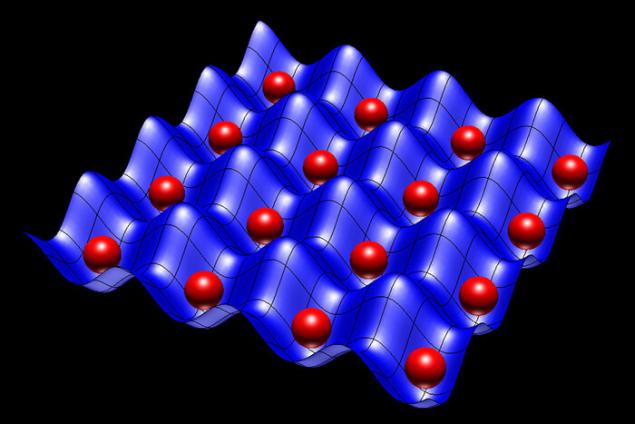
As is well known, unstable radioactive particles decay not only for experiments with cats, but quite by themselves. In addition, each particle has an average life time which is able to grow under the watchful eye of the observer.
For the first time this quantum effect was predicted in the 1960-ies, and its brilliant experimental proof appeared in the article published in 2006 by a group of Nobel laureate in physics Wolfgang Ketterle of the Massachusetts Institute of technology.
In this work studied the decay of unstable excited rubidium atoms (decay into rubidium atoms in the ground state and the photons). Immediately after preparation of the system, the excitation of the atoms behind them began to observe — to Shine their laser beam. The observations were conducted in two modes: continuous (the system is constantly served in small light pulses) and pulse (the system from time to time irradiated with pulses more powerful).
The obtained results well coincide with the theoretical predictions. External light effects really slow down the decay of particles, return them to their original, far from the collapse of the state. The magnitude of the effect for the two studied modes also coincides with the predictions. And the maximum life of unstable excited rubidium atoms was able to extend 30 times.
Quantum mechanics and consciousness
Electrons and fullerenes cease to show their wave properties, aluminum plates cool, and unstable particles freeze in their breakup: under the omnipotent gaze of the observer the world changes. Heat not evidence of the involvement of our mind in the world to work around? So maybe the right was Carl Jung and Wolfgang Pauli (Austrian physicist, Nobel laureate, one of the pioneers of quantum mechanics), when he said that the laws of physics and consciousness should be seen as complementary?
But it remains only one step to the duty of recognition: the whole world around the essence of the illusory product of our mind.
Creepy? ("Do you really think that the Moon exists only when you look at her?" commented Einstein with quantum mechanics). Then try again refer to the physicists. Moreover, in recent years they have increasingly less in favor of the Copenhagen interpretation of quantum mechanics, with its mysterious collapse of the wave function, which comes quite down to earth and reliable the term decoherence.
Here's the thing — in all of the described experiments with the supervision of the experimenters inevitably impacted the system. Illuminated it with a laser, installed measuring devices. And this is a very important principle: you cannot observe the system, measure its properties, not browseinterval with her. Where's the interaction there and edit properties. Moreover, when a tiny quantum system interacting colossus quantum objects. So the eternal Buddhist observer neutrality is impossible.
This explains the term "decoherence" is irreversible from the point of view of the thermodynamics of the process violations of the quantum properties of the system in its interaction with another, larger system. During this interaction the quantum system loses its original traits and becomes a classic, "subject to" the system large. This explains the paradox with schrödinger's cat: the cat is so large system that it simply cannot be isolated from the world. The very formulation of the thought experiment is not quite correct.
In any case, compared to the reality as the act of creation of consciousness, decoherence sounds much more relaxed. Even, perhaps, too quiet. After all, with this approach, the entire classical world is one big effect of decoherence. And as the authors of one of the most important books in this field, such approaches still follow logically affirmations like "in the world there are no particles" or "there is no time at a fundamental level".
Also interesting: How CONSCIOUSNESS controls matter
Physics of elementary particles of your body
Creative observer or powerful decoherence? You have to choose the lesser of two evils. But remember, now scientists are increasingly convinced that the basis of our thought processes are the most notorious quantum effects. So where observation ends and reality begins — have to choose each of us.published
Author: Mihail Petrov
Source: theoryandpractice.ru/posts/8507-quantum-experiment
Yes, many physicists have learned to use its laws and even predict phenomena based on quantum calculations. But it is still unclear why the presence of the observer determines the fate of systems and forces her to make a choice in favor of one state.
We selected examples of experiments for which the outcome is inevitably affected by the observer, and tried to understand what quantum mechanics is going to do with the interference of consciousness in the material reality.
Schrodinger's Cat

Today there are many interpretations of quantum mechanics, the most popular of which remains Copenhagen. Its main ideas in the 1920-ies was formulated by Niels Bohr and Werner Heisenberg. A Central term of the Copenhagen interpretation became the wave function — a mathematical function containing information about all possible States of a quantum system, in which it also resides.
According to the Copenhagen interpretation, it is to determine the state of the system, to distinguish it from the rest can only observation (wave function only helps to mathematically calculate the probability to nd the system in a particular state). We can say that after observation, the quantum system becomes classical: instantly ceases to coexist in many States in favor of one of them.
This approach has always been opponents (recall the "God does not play dice", albert Einstein), but the accuracy of calculations and predictions prevailed. However, in recent years supporters of the Copenhagen interpretation is becoming less and not the last reason for that is the mysterious instant collapse of the wave function during the measurement. The famous thought experiment of Erwin schrödinger with the poor cat was meant to show the absurdity of this phenomenon.
So remind the content of the experiment. In a black box placed a living cat, a vial of poison and a mechanism that can at a random moment to let the poison in action. For example, one radioactive atom, the decay of which will break the vial. The exact time of decay of an atom is unknown. Known only to half-life: the time during which the decay happens with a probability of 50%.
It turns out that to the outside observer, the cat inside the box exists in two States: either alive, if all goes well, or dead, if the decay occurred and the vial crashed. Both of these conditions describes the wave function of the cat, which changes over time: the farther away, the more likely that radioactive decay has already happened. But as soon as the box is opened the wave function collapses and we see the outcome zhivoderskie experiment.
Thus, as long as the observer does not open the box, the cat will be so forever balancing on the border between life and death, and will determine his fate only the action of the observer. That's absurd, pointed to schrödinger.
The diffraction of electrons

In the largest survey of physicists conducted by The New York Times, experience with diffraction of electrons, delivered in 1961, Klaus Jinsona, has become one of the most beautiful in the history of science.What is its essence?
There is a source that emits a stream of electrons toward the screen-plates. And there is an obstacle in the way of these electrons, a copper plate with two slits. What is the picture on the screen can be expected if the electrons are just small charged balls? Two strips illuminated opposite to the slits.
In fact, on the screen appears much more complex pattern of alternating black and white bands. The fact that during the passage through the slits, the electrons begin to behave not as particles but as waves (similar to as photons, particles of light, can be simultaneously and waves). Then these waves interact in space, somewhere relaxing, somewhere mutually reinforcing, and the result appears on the screen is a complex pattern of alternating light and dark bands.
The result of the experiment does not change, and if you let the electrons through the gap is not a continuous stream, and one by one, even one particle can be both wave. Even a single electron can pass simultaneously through two slits (and it is still one of the most important provisions of the Copenhagen interpretation of quantum mechanics objects can simultaneously show your "usual" material properties, and exotic wave).
But what is the observer? Despite the fact that with him the already complicated story became more complicated. When in similar experiments physicists have tried to fix with the help of instruments which slit the electron actually goes, the picture changed dramatically and became a "classic": two of the illuminated area in front of the slits and no alternating bands.
If electrons did not want to show their wave nature under the watchful eye of the observer. Adjusted to his instinctive desire to see a simple and clear picture. Mystic? There are far more simple explanation: no observation of the system cannot be carried out without physical impact on her. But come back to this a little later.
The heated fullerene

Experiments on the diffraction of particles was not only on electrons but also on much larger objects. For example, fullerenes — large, confined molecules, composed of dozens of carbon atoms (fullerene of sixty carbon atoms form very similar to a soccer ball: a hollow sphere made of five - and hexagons).
Recently, a group from the University of Vienna led by Professor Zeilinger tried to introduce an element of observation in these experiments. To do this, they irradiated moving molecules of fullerene by the laser beam. After a heated external impact, the molecules began to glow and the impression was found for observer its place in space.
With this new feature changed the behavior of molecules. Before the start of the surveillance fullerenes quite successfully around obstacles (exhibited wave properties), like the electrons of the previous example, passing through an opaque screen. But later, with the advent of the observer, fullerenes calmed down and began to behave as a completely law-abiding particles of matter.
Cooling measurement

One of the most famous laws of the quantum world is the Heisenberg's uncertainty principle: we cannot simultaneously set the position and velocity of a quantum object. The more precisely you measure the momentum of a particle, the less precisely you can measure its position. But the action of the quantum laws operating on the level of tiny particles, usually unnoticed in our world of large macro-objects.
Because the more recent experiments of the group of Professor Schwab from the United States, in which quantum effects demonstrated not on the same level of electrons or fullerene molecules (their characteristic diameter is about 1 nm), and a little more tangible object — a tiny aluminum strip.
This strip cemented on both sides so that its middle was in limbo and could vibrate under external influence. In addition, near the strip was the device capable of accurately detect its position.
As a result, the experimenters found two interesting effects. First, any measurement of the position of the object, the monitoring strip is not passed for it completely — after each measurement the position of the strips were varied. Roughly speaking, the experimenters with great accuracy determined by the coordinates of the strips and thus, in Heisenberg's principle, changed its speed, and hence the subsequent position.
Second, quite unexpected, some measurements also led to the cooling of the strip. So, the observer can only be one presence to change the physical characteristics of the objects. Sounds quite incredible, but to the credit of physicists say that they are not confused — now the group of Professor Schwab, thinks how to apply the effect to cool electronic chips.
Fading particles

As is well known, unstable radioactive particles decay not only for experiments with cats, but quite by themselves. In addition, each particle has an average life time which is able to grow under the watchful eye of the observer.
For the first time this quantum effect was predicted in the 1960-ies, and its brilliant experimental proof appeared in the article published in 2006 by a group of Nobel laureate in physics Wolfgang Ketterle of the Massachusetts Institute of technology.
In this work studied the decay of unstable excited rubidium atoms (decay into rubidium atoms in the ground state and the photons). Immediately after preparation of the system, the excitation of the atoms behind them began to observe — to Shine their laser beam. The observations were conducted in two modes: continuous (the system is constantly served in small light pulses) and pulse (the system from time to time irradiated with pulses more powerful).
The obtained results well coincide with the theoretical predictions. External light effects really slow down the decay of particles, return them to their original, far from the collapse of the state. The magnitude of the effect for the two studied modes also coincides with the predictions. And the maximum life of unstable excited rubidium atoms was able to extend 30 times.
Quantum mechanics and consciousness
Electrons and fullerenes cease to show their wave properties, aluminum plates cool, and unstable particles freeze in their breakup: under the omnipotent gaze of the observer the world changes. Heat not evidence of the involvement of our mind in the world to work around? So maybe the right was Carl Jung and Wolfgang Pauli (Austrian physicist, Nobel laureate, one of the pioneers of quantum mechanics), when he said that the laws of physics and consciousness should be seen as complementary?
But it remains only one step to the duty of recognition: the whole world around the essence of the illusory product of our mind.
Creepy? ("Do you really think that the Moon exists only when you look at her?" commented Einstein with quantum mechanics). Then try again refer to the physicists. Moreover, in recent years they have increasingly less in favor of the Copenhagen interpretation of quantum mechanics, with its mysterious collapse of the wave function, which comes quite down to earth and reliable the term decoherence.
Here's the thing — in all of the described experiments with the supervision of the experimenters inevitably impacted the system. Illuminated it with a laser, installed measuring devices. And this is a very important principle: you cannot observe the system, measure its properties, not browseinterval with her. Where's the interaction there and edit properties. Moreover, when a tiny quantum system interacting colossus quantum objects. So the eternal Buddhist observer neutrality is impossible.
This explains the term "decoherence" is irreversible from the point of view of the thermodynamics of the process violations of the quantum properties of the system in its interaction with another, larger system. During this interaction the quantum system loses its original traits and becomes a classic, "subject to" the system large. This explains the paradox with schrödinger's cat: the cat is so large system that it simply cannot be isolated from the world. The very formulation of the thought experiment is not quite correct.
In any case, compared to the reality as the act of creation of consciousness, decoherence sounds much more relaxed. Even, perhaps, too quiet. After all, with this approach, the entire classical world is one big effect of decoherence. And as the authors of one of the most important books in this field, such approaches still follow logically affirmations like "in the world there are no particles" or "there is no time at a fundamental level".
Also interesting: How CONSCIOUSNESS controls matter
Physics of elementary particles of your body
Creative observer or powerful decoherence? You have to choose the lesser of two evils. But remember, now scientists are increasingly convinced that the basis of our thought processes are the most notorious quantum effects. So where observation ends and reality begins — have to choose each of us.published
Author: Mihail Petrov
Source: theoryandpractice.ru/posts/8507-quantum-experiment
Solar cell quantum dots are better and cheaper than silicon
For those who have just got a new job: 14 tips

